Beautiful Deception
"Art is the most beautiful deception of all." Claude Debussy
No one dies like that, unless … In a small city in South West France, an art historian falls to his death, a student is murdered, a museum curator is crushed in a freak accident.
Celestine Courbet, former detective in the Police Judiciaire, wintering in the small port nearby with her eccentric partner Jacques Lecoubarry, recognises the patterns and is drawn inexorably into a world of art forgery and organised crime, where desperate people take violent measures and it seems everyone, even friends, are hiding something.
Celestine’s investigation takes her from the local museum to the sophisticated art galleries of Paris and Zurich. Trying to force the players to reveal themselves, she soon finds that she is the one out in the open and in peril.
Four suspects; the beautiful, the powerful, the devious and the vicious – how can Celestine unravel the threads before another murder is committed?
This, the third in the Celestine Courbet series, surges towards a thrilling climax in the ancient heights of the town in the sky; but will the truth lead to redemption or more violent deaths?
Background to the Story - I wanted to include Montauban in Jacques and Celestine's itinerary as the next berth on their travels down the canal. It made some sense geographically, but also because it is an interesting city, and where, according to the tourist literature, art and culture take centre stage. The dominant monument in the small city of Montauban is the old bishop's palace, now the Ingres Bourdelle Museum. The painter Jean Auguste Dominique Ingres and the sculptor Antoine Bourdelle were sons of the town, and the museum holds many of their works.
I had been doing research into art forgery, and was astounded to read that in one gallery in the south of France 70% of the works on display were found to be forgeries. I read a quote from a Swiss art specialist who claimed that at least 50% of the artworks in circulation were not genuine. I began to wonder about the nature of the crime of forging works of art. Far from being a rather quixotic activity by a few talented but morally dubious daubers, I discovered that it was on a much grander and more sinister scale. Organised criminals were involved in all aspects of the 'trade', large sums of money were generated and the proceeds of crime hidden in its murky depths. And murders were committed. Hence the arrival of Celestine and Jacques into the play, drawn inexorably, like moths to a street lamp, to mystery, murder and danger. Hauled up for the winter in their barge Incognito, I ran them ragged as they searched for the truth behind the killings, and behind their own volatile relationship. Why Cordes Sur Ciel? Apart from the fact that it is an exhilarating site, full of history and drama, in the 1940s it became a retreat for artists, poets and writers, and even now is home to a wide range of artists and craftspeople. I wanted to contrast their honesty and fidelity to their craft with the other side, by introducing a sour note, a forger in their midst. Art forgery is not a victimless crime, and it seemed fitting that the horrific climax should take place there.
The story is a work of fiction, and in no way suggests that the artwork in any Museums in the area is anything other than authentic and genuine.
Places that inspired the story...
Montauban
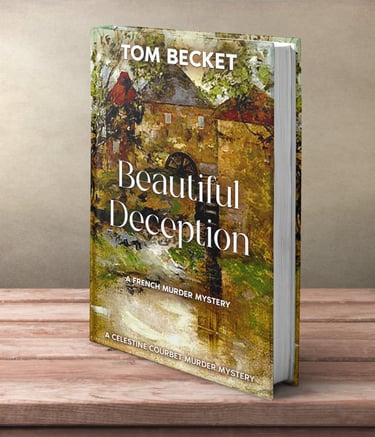

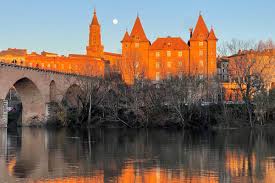
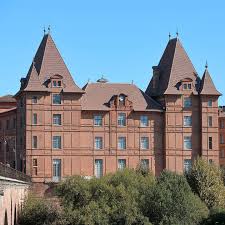
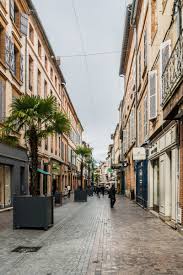
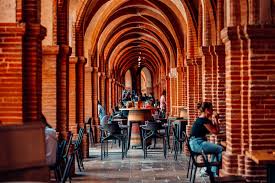
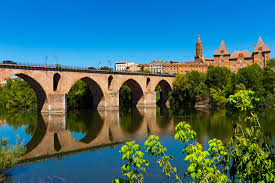
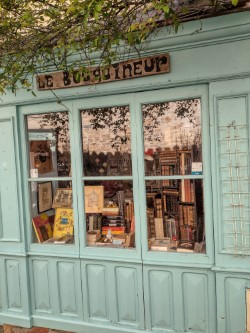
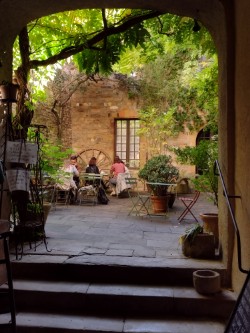
The historic bastide town of Montauban situated about 50 kilometres north of Toulouse in the Tarn-et-Garonne department, was founded in 1144 by the Count of Toulouse. Beside the banks of the River Tarn, it is largely constructed using the attractive pink stone found in the region, At the centre of the original bastide, is the Place Nationale, surrounded by grand pink houses and set above pretty arcades. The arcades (the arches) and walkways that surround the square, historically provided shelter for the market traders, are an unusual 'double' construction. The centre of the square today features a 'mirror of water' with several tiny fountains and an occasional mist of water. It is impressive and cooling during the summer months.
When you reach the banks of the wide Tarn River you can see the lovely old bridge - built around 1303-1335. But before crossing the bridge, and as you walk along the Quai Montmurat, you come across three historic convents built in the 17th century and now used for other purposes. Walking in the opposite direction, the road leads to the Jardin des Plantes, a large public garden with a wide range of trees and flowers along the banks of the Tescou. The trees come from all around the world.
Beside the old bridge, is the unmistakable edifice that is the Ingres Bourdelle Museum, which is well worth a visit to see the works of renowned 19th-century artist Jean-Auguste-Dominique Ingres and another famous local artist, sculptor Antoine Bourdelle. Housed in an impressive palace which was built on the site of an earlier chateau allegedly occupied by the Black Prince during the Hundred Years Wars. You can see remains of the original building in the basement of the museum.
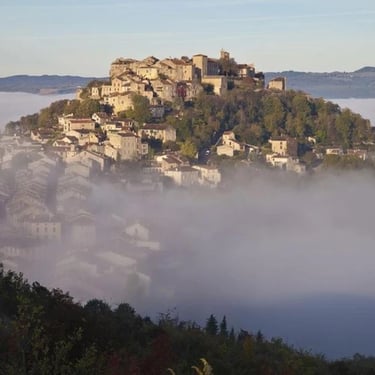
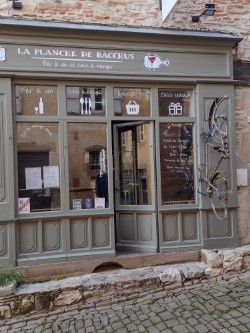
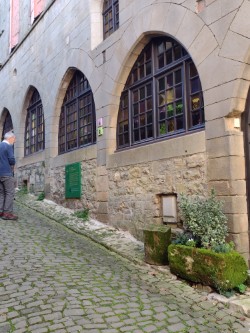
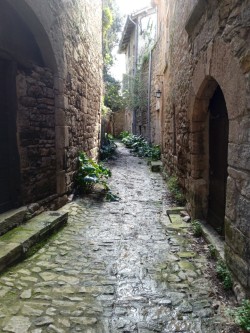
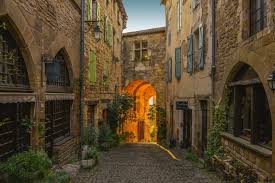
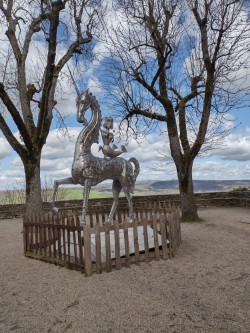
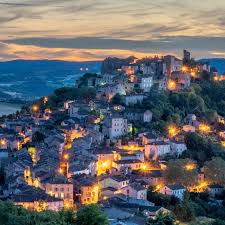
"The traveler who, from the terrace of Cordes , looks at the summer night and knows that he has no need to go further and that, if he wishes, the beauty here, day after day, will remove him from all solitude."
– Albert Camus
Dating back to the Middle Ages Cordes, is a stone city rising on a promontory, and it seems to climb up through the clouds to the sky. But if you visit, forget the heels! You don't go up to Cordes sur Ciel by car either! The ascent is done on foot, through the steep and cobbled streets.
While climbing to the top of the city, it's worth stopping to visit the workshops of artists and craftsmen, who for a long time, have found inspiration here. While meandering towards the top of the town, you can immerse yourself in the medieval atmosphere - fortified gates, ramparts, sculpted Gothic facades and hidden corners. It's charm works from the very first step, and from the top of this medieval city you dominate the world and can contemplate history and your place in it. Some mornings when the pink mist has invaded the valley, Cordes sur Ciel deserves its name and floats above the clouds. Sometimes, in winter, the mist envelops it and isolates it from the world below. During the 1940’s Cordes became a haven when Jeanne Ramel-Cals, a celebrated Parisian poetess, escaped the war in the north to settle in Cordes. Other artists and writers followed her, giving the village a new life as an artistic centre, which endures today. Most famously, the artist Yves Brayer, known for his landscape paintings of Provence and the writer Albert Camus lived in Cordes and inspired the creation of the Cordes Academy of Art. This medieval gem of a village, celebrated its 800th year in 2022, and still remains a haven for artists and artisans today - a world-renowned metal sculptor and mosaic artist, a painter, a stonemason, a violin maker and more, draw inspiration from this glorious 12th century French village, and enjoy living within the timber-framed houses, whose sun-baked stone walls lean towards each other over steep cobbled streets.
Purchasing Options .... Click on the buttons to go directly to your store of choice.
Amazon stores worldwide, both as an E-book to download or as a paperback.
Available as an E-book on all Draft2Digital Stores;
Also available through KOBO and FREE to read on Kobo Plus;
